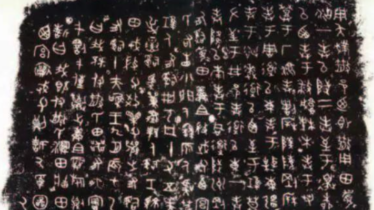How to improve your Chinese pronunciation
Many Chinese learners feel overwhelmed when they start learning the Mandarin Chinese language. Chinese comes with its set of challenges, such as Hanzi characters, or the grammar. Another big obstacle is pronunciation. Chinese learners often feel that they will never be able to correctly pronounce the tricky sounds, for which there are no equivalent sounds in their native languages.
Here we list some excellent tips for you to help improve your Mandarin Chinese language pronunciation.
Eight tips on how to improve your Chinese pronunciation
Master tone sandhi to improve your Chinese pronunciation
After the basic Mandarin tones, it’s time to drill your brain with tones that frequently change. Tonal change is quite common. In certain situations according to specific rules, the tones will make some changes, which are called tone sandhi or 变调规则 (biàndiào guīzé). Basically, there are three rules:
Rule #1: ‘3rd tone followed by 3rd tone’ becomes ‘2nd tone followed by 3rd tone’
Example: The word nǐhǎo (你好, hello) —–> ní hǎo.
Rule #2: ‘不(bù) followed by 4th tone’ becomes ‘不(bú)+ 4th tone’
Example: bù shì (不是, be not) —–> búshì
Rule #3: The word 一 (yī) is 1st tone when used as part of a number.
Example: yī 一 (one), èr 二 (two), sān 三 (three), etcetera
But, the word ‘一 (yī) followed by a 1st/2nd/3rd tone’ becomes 一 (yì) + 1st/2nd/3rd tone
Example: yībān(一般, normal) —–> yìbān
And ‘一 (yī) followed by 4th tone’ becomes ‘一 (yí) followed by 4th tone’
Example: Yī yàng(一样,the same)—–> yí yàng
Expose yourself to Chinese to train your ears
In language learning, listening and speaking are always inseparable. To improve your speaking, it’s important that when you listen to different words you can tell the difference between them.
You will find it helpful to listen to a variety of audio in Chinese; podcasts, movies, TV shows, and the radio are good options for this. You can find Chinese TV shows for kids which is in Chinese, for example, Peppa Pig (in Chinese, ‘小猪佩奇 Xiǎo zhū Pèiqí’). If you love music, listen to Chinese music, and try to learn the songs, and pay extra attention to the lyrics and how they sound. Additionally, you can listen to the range of native speakers’ accents and voices to learn how the Chinese language is consistent from one person to another.
Mandarin is a tonal language. It is special. Try to listen to a Chinese speaker who has very nice, melodic Mandarin pronunciation. Immerse yourself in it, and this appreciation will help your Mandarin pronunciation. If not sooner, then later. When you are listening, what you need to do is to listen carefully to how each word is spoken, the intonation, the pauses, the rising, lowering, and leveling of the speaker’s voice. This is related to learning the tones, as follows:
- High level – mā (the tone is high but is level)
- Rising tone – má (the tone goes up and ends abruptly like you’re asking a question)
- Falling-rising tone – mǎ (the tone goes down and up like you’re lowering your chin to your neck then back up again)
- Falling tone – mà (the tone goes from high to low, like the sound you utter when you’re stomping your feet in disgust)
With these examples as your guide, you’ll soon learn to distinguish the Chinese tones. Of course, it will take time, so don’t be afraid to make mistakes.
Shadow native speakers
More than just listening to the materials mentioned above, it’s better to repeat what you listened to. By shadowing, we mean repeating after standard Mandarin Chinese language material. The way to do this is to listen to the Chinese audio or video materials in small sections, hit the pause button, and try to copy the speaker. Many experts say that this technique is the closest you can get to the way children learn their native language.
Practice Chinese tongue twisters
Tongue twisters are a time-tested method of improving pronunciation. A tongue twister is a phrase that is difficult to pronounce, because it is made up of many similar sounds which are easy to pronunce wrong. For example:
- 四是四,十是十,十四是十四,四十是四十。(Sì shì sì, shí shì shí, shí sì shì shí sì, sì shí shì sì shí.)
or:
- 黑化肥发灰会挥发,灰化肥挥发会发黑。(Hēi huà féi fā huī huì huī fā, huī huà féi huī fā huì fā hēi.)
Start off by trying to pronounce all of the words in the tongue twister slowly, but correctly. Then try to pick up the pace until you can say them really fast. You will see for yourself that they are an excellent way of exercising your speech organs.
Click here for many more tongue twisters in Chinese — and a video.
Use language flow to improve your Chinese pronunciation
Choose a frase or sentence that you’re familiar with to practice. For example, nǐhǎo, wǒ hěn hǎo, are better than just one hǎo. Pay attention to how the tonal rhythm changes in language flow, and then repeat it till you catch the feeling. In this way, you will easily upgrade your pronunciation of Chinese words. After gaining a firm understanding of every possible combination, pronunciation will become much easier.
Take notes of the errors of your Chinese pronunciation
After some time learning Chinese, you might well be aware of the errors you would often make when speaking. It’s suggested that you take notes. If you don’t have a Chinese teacher to monitor you, then just simply make the most of elemental listening and speaking materials and take notes of syllables you tend to mispronounce. And the next step is to move on to higher-leveled materials, like TV or Netflix programs or films, to polish your pronunciation in more authentic language flows.
Take a break to improve your Chinese pronunciation
If you have been immersed in Chinese speaking environment for a long period of time, then maybe you could take a break—stop speaking or listening to Chinese.
In a language acquisition process, this is called a ‘Silent Period‘. Such a strategy is aimed at taking all pressure off the language area of the brain. Studies showed that the result of learning can be much boosted after our brain takes a good break. After the necessary period — two or three months — you might be surprised that knowledge like grammar, vocabulary, and the way of pronouncing has become clearer and consolidated. As a matter of fact, this theory has been proved efficient regarding language acquisition by experts.
Repetitive review and practice
On a regular basis, you should review your list of errors to find any patterns and then discover what you need to fix in order to address those patterns. The next step is to routinely practice the corrected pronunciation. Multiple practice sessions will be needed; it may be helpful for you to practice out loud at home. As you make each sound, pay attention to how it sounds and how similar or dissimilar it is to native speakers. While making each sound, ask yourself questions such as, “Where is my tongue right now?” and “How is my mouth moving?”. It is important to notice the physical aspects of pronunciation so that you will be aware of what works and what is ineffective.
Improving your Chinese pronunciation depends on your dedication. If you want to be a fluent speaker, allow native speakers to correct you. Have a plan on what to learn each day or each week and focus your attention on them. It is more effective to learn in small chunks instead of trying to take everything in at one time. The important thing is to persist in practicing every day. Keep it up and you will reach the HSK level you want to!



